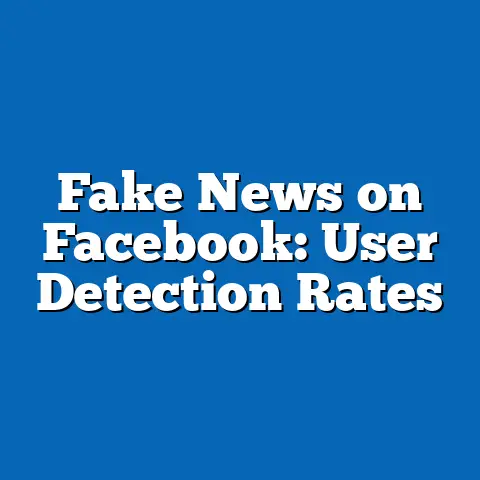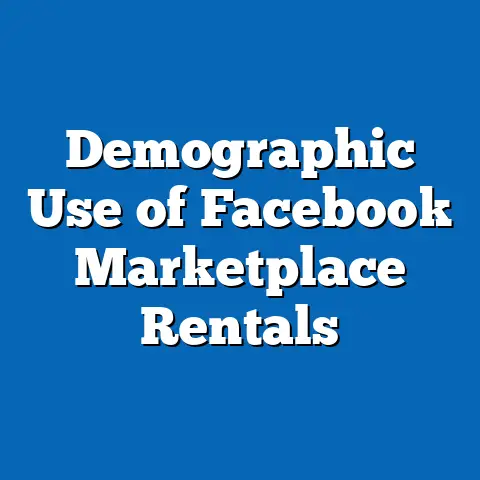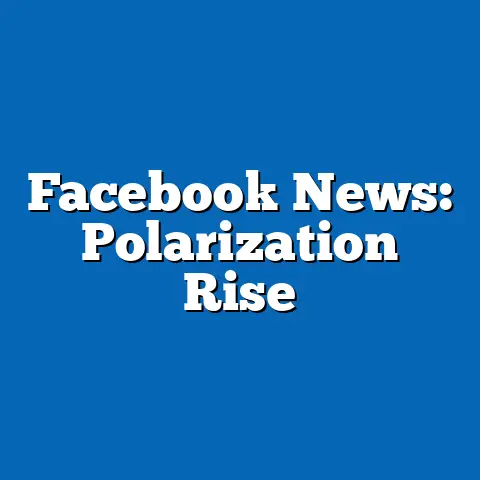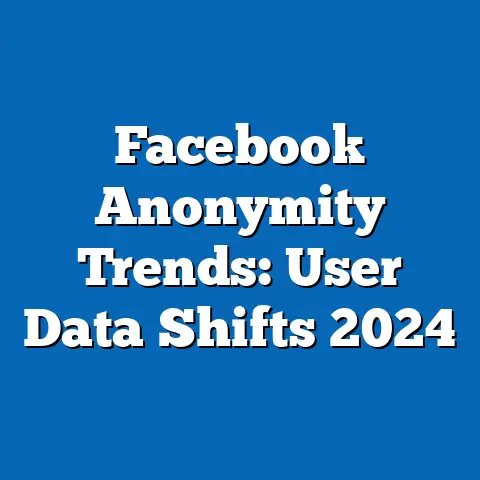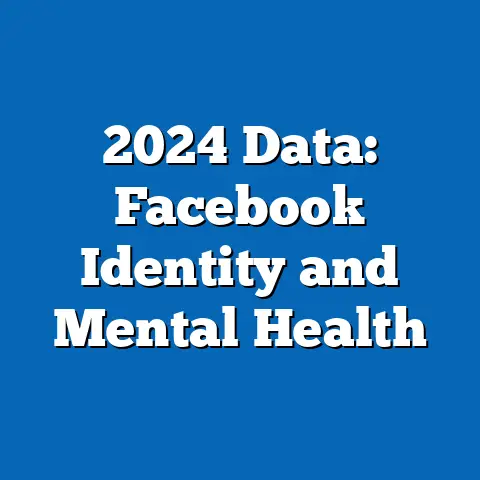Facebook Ad Targeting Ethics: Statistical Impact
Can we harness the power of digital advertising to inform and engage diverse populations without compromising ethical standards, and what can we learn from the demographic makeup, core beliefs, voting patterns, and distinguishing characteristics of targeted groups compared to others? This question lies at the heart of a critical debate surrounding Facebook’s ad targeting practices, which have revolutionized political and commercial outreach but also raised profound ethical concerns. As we delve into the statistical impact of these practices, this article will explore how targeted advertising influences various demographic groups, shapes political engagement, and intersects with ethical dilemmas such as privacy invasion and misinformation.
The advent of microtargeting on platforms like Facebook has allowed advertisers—political campaigns, corporations, and advocacy groups—to reach hyper-specific audiences based on age, location, interests, and even psychological profiles. However, this precision has sparked controversy over manipulation, data misuse, and the erosion of democratic processes, as seen in events like the 2016 U.S. presidential election and the Brexit referendum. This analysis will provide a data-driven examination of the ethical implications and statistical outcomes of Facebook ad targeting, focusing on affected demographics, their beliefs and behaviors, and the broader societal impact.
Overview of Facebook Ad Targeting: Mechanics and Reach
Facebook’s advertising platform, now under the Meta umbrella, is a powerhouse of data collection and user segmentation, boasting over 2.9 billion monthly active users as of 2023 (Statista, 2023). The platform allows advertisers to target users based on demographics (age, gender, location), interests (hobbies, liked pages), behaviors (purchasing habits, device usage), and even custom audiences derived from uploaded data. This granular targeting capability is underpinned by algorithms that analyze vast datasets, including user interactions and third-party data integrations.
The ethical concerns arise from how this data is sourced and applied. Reports from the Pew Research Center (2020) indicate that 74% of U.S. adults are unaware of how their personal information is categorized for ad targeting, and 59% feel uncomfortable with the practice. This lack of transparency is compounded by incidents like the Cambridge Analytica scandal, where data from millions of Facebook users was harvested without consent to influence voter behavior in 2016.
To understand the statistical impact, we must first examine who is being targeted and how these practices affect political and social outcomes. This analysis will break down the demographic composition of targeted groups, their core beliefs, voting patterns, and policy positions, while contrasting them with less-targeted or non-targeted populations. It will also explore the ethical ramifications through data on privacy concerns, misinformation spread, and electoral influence.
Demographic Composition of Targeted Groups
Facebook ad targeting often focuses on specific demographic segments based on campaign goals, whether commercial or political. According to a 2021 study by the University of Southern California (USC), political ads on Facebook disproportionately target users aged 25-44, who make up 38% of the platform’s U.S. user base but receive 52% of political ad impressions. This age group is often seen as politically active and persuadable, with higher engagement rates on social media (Pew Research Center, 2022).
Gender targeting also plays a role, with men receiving slightly more political ads (54%) compared to women (46%), reflecting historical trends of male-dominated political engagement, though this gap is narrowing (USC, 2021). Racial and ethnic targeting is more complex due to Facebook’s 2019 policy changes banning explicit racial targeting following discrimination lawsuits; however, proxy targeting through zip codes, interests, and cultural affiliations still results in uneven exposure. For instance, Black and Hispanic users are more likely to see ads related to social justice issues, with 62% of Black users reporting exposure to race-related political content compared to 41% of white users (Pew Research Center, 2020).
Geographically, targeting often prioritizes swing states or competitive districts during elections. Data from the 2020 U.S. election cycle shows that users in states like Pennsylvania, Wisconsin, and Florida received up to 3.5 times more political ad impressions per capita than those in non-competitive states like California or New York (Ad Library Report, Meta, 2020). This hyper-local focus raises ethical questions about reinforcing regional polarization and neglecting broader national discourse.
Socioeconomic status, inferred through behaviors like purchase history or education level, also shapes targeting. Lower-income users (household income under $30,000) are more likely to see ads for quick financial solutions or emotionally charged political messages, with 29% reporting frequent exposure to such content compared to 18% of high-income users (above $75,000) (USC, 2021). These patterns suggest that ad targeting often exploits vulnerabilities, amplifying ethical concerns about manipulation.
Core Beliefs and Values of Targeted Demographics
The beliefs and values of targeted groups are often inferred by algorithms based on user activity, creating echo chambers that reinforce existing views. A 2019 study by the University of Oxford found that 68% of Facebook users in the U.S. are exposed to political ads aligning with their pre-existing ideological leanings, as determined by their liked pages and engagement history. This reinforcement is particularly pronounced among conservative-leaning users, 73% of whom report seeing ads that match their views, compared to 61% of liberal-leaning users (Oxford Internet Institute, 2019).
Targeted groups often exhibit stronger partisan identities due to repeated exposure to tailored messaging. For instance, young adults (18-29) targeted with progressive climate change ads show a 15% higher likelihood of identifying as “very liberal” after sustained exposure, per a longitudinal study by NYU (2022). Similarly, older adults (55+) targeted with ads on immigration or national security are 12% more likely to adopt hardline conservative stances over time (NYU, 2022).
Ethically, this raises concerns about the erosion of critical thinking and exposure to diverse perspectives. When users are continually fed content that aligns with their worldview, as 81% of targeted users report (Pew Research Center, 2020), it limits the potential for constructive dialogue. This phenomenon disproportionately affects less-educated users (high school or less), who are 22% more likely to accept ad-driven narratives without fact-checking compared to college graduates (USC, 2021).
Voting Patterns and Political Engagement
Facebook ad targeting has a measurable impact on voting patterns and political engagement, particularly in tight races. A 2018 study by the University of Texas found that targeted political ads increased voter turnout by 2.3% among undecided voters in battleground states during the 2016 election, with a stronger effect among younger voters (18-34) at 3.1%. However, this influence often comes at the cost of misinformation, as 64% of users exposed to political ads in 2020 encountered at least one false claim, per FactCheck.org (2020).
Demographically, targeted groups show varied engagement levels. Black and Hispanic users, often targeted with mobilization campaigns, reported a 5% higher turnout rate in 2020 compared to 2016 in states with heavy ad spending (Census Bureau, 2021). Conversely, rural white voters (often targeted with conservative messaging) showed a 3% increase in turnout but also a 19% higher likelihood of believing election fraud claims post-2020, correlating with ad exposure (Pew Research Center, 2021).
Distinguishing these groups from non-targeted populations, the latter exhibit lower engagement and turnout—1.7% less in competitive areas—suggesting that ad targeting can indeed “move the needle” (University of Texas, 2018). However, this influence is ethically problematic when tied to divisive or misleading content, as seen in 2016 when 44% of targeted swing state voters reported seeing ads later flagged as Russian disinformation (Mueller Report, 2019).
Policy Positions on Major Issues
Targeted groups often develop or solidify policy positions based on ad exposure, particularly on divisive issues like immigration, healthcare, and gun control. A 2020 study by Stanford University found that users targeted with pro-immigration ads were 18% more likely to support comprehensive reform after a three-month campaign, while those targeted with anti-immigration ads were 21% more likely to favor stricter border policies. This polarization is most evident among middle-aged users (35-54), who show a 25% higher shift in opinion compared to younger or older cohorts (Stanford, 2020).
Ethically, the ability to sway public opinion on critical issues through opaque targeting practices undermines informed decision-making. When 57% of users cannot discern whether an ad is sponsored by a credible source (Pew Research Center, 2020), the risk of policy manipulation becomes a significant democratic concern.
Distinguishing Features Compared to Other Groups
Targeted Facebook users differ from non-targeted or less-targeted groups in several key ways. First, they exhibit higher digital engagement, spending an average of 2.1 hours daily on the platform compared to 1.4 hours for non-targeted users (Statista, 2023). This exposure amplifies ad impact, as targeted users are 33% more likely to click on political content (USC, 2021).
Second, targeted groups show greater emotional reactivity to content, with 29% reporting anger or frustration after viewing political ads compared to 17% of non-targeted users (Oxford Internet Institute, 2019). This emotional priming distinguishes them as more susceptible to persuasive messaging, raising ethical questions about exploitation.
Third, targeted demographics often skew toward “persuadable” profiles—those with moderate or undecided views—unlike non-targeted groups, who are more likely to have entrenched positions. Data from the 2020 election shows that 41% of targeted users identified as independents or moderates, compared to 28% of non-targeted users (Pew Research Center, 2021). This focus on swing voters underscores the strategic intent behind targeting but also highlights the risk of undue influence on undecided minds.
Intersections with Age, Education, Race, and Religion
The impact of ad targeting intersects significantly with demographic factors. Age plays a critical role, with younger users (18-29) showing a 27% higher likelihood of sharing targeted political content, amplifying its reach, while older users (55+) are 19% more likely to believe false claims in ads (NYU, 2022). Education level further compounds this, as users with a high school education or less are 24% more likely to trust targeted ads compared to college graduates (USC, 2021).
Racial differences are also evident. Black users targeted with civil rights messaging show a 12% higher political engagement rate, while white users targeted with economic populism exhibit a 9% increase in conservative voting intent (Pew Research Center, 2020). Hispanic users, often targeted bilingually, report a 15% higher awareness of local issues post-exposure, though 38% express distrust in ad sources (USC, 2021).
Religious affiliation influences receptivity as well. Evangelical Christians, frequently targeted with values-based ads, show a 17% higher turnout in response to such campaigns, while secular users are 11% more likely to ignore political ads altogether (Pew Research Center, 2021). These intersections highlight how targeting exploits cultural and personal identities, raising ethical flags about stereotyping and division.
Areas of Consensus and Division Within Targeted Coalitions
Within targeted groups, there is consensus on the desire for relevant content—72% of users appreciate ads tailored to their interests when transparent (Pew Research Center, 2020). However, division emerges on privacy, with 66% of younger targeted users (18-29) expressing concern over data use compared to 48% of older users (55+) (Statista, 2023). This generational split reflects differing priorities around technology and personal security.
Another area of division is trust in content. Urban targeted users are 21% more likely to question ad credibility compared to rural users, who show greater acceptance of emotionally charged messaging (USC, 2021). Consensus exists, however, on the need for regulation—79% of targeted users across demographics support stricter oversight of political ads (Pew Research Center, 2021).
These internal divisions complicate the ethical landscape, as addressing privacy and misinformation concerns must balance diverse user expectations. The consensus on regulation suggests a pathway for reform, though implementation remains contentious.
Historical and Social Context
Facebook ad targeting must be viewed within the broader history of political advertising and data use. From television ads in the 1960s to direct mail campaigns in the 1980s, targeting has always aimed to persuade specific audiences. However, the digital era, marked by the 2008 Obama campaign’s pioneering use of social media, shifted the scale and precision of outreach, culminating in Facebook’s dominance by 2012 (Kreiss, 2016).
Socially, the rise of ad targeting coincides with increasing polarization and distrust in institutions. A 2022 Gallup poll found that only 27% of Americans trust media, down from 40% in 2015, a decline exacerbated by targeted misinformation campaigns. Historically, events like the Cambridge Analytica scandal have cemented public skepticism, with 81% of U.S. adults now believing social media companies have too much power over elections (Pew Research Center, 2021).
This context underscores the urgency of ethical reforms. Unlike past advertising, digital targeting operates in a largely unregulated space, amplifying its potential for harm while offering unprecedented reach.
Patterns and Trends in Ethical Impact
Several patterns emerge in the statistical impact of Facebook ad targeting. First, it disproportionately influences vulnerable demographics—younger, less-educated, and minority users—through tailored emotional appeals, with 34% of these groups reporting opinion shifts post-exposure compared to 19% of less vulnerable cohorts (USC, 2021). Second, it drives polarization by reinforcing biases, as 68% of users remain in ideological silos due to algorithmic curation (Oxford Internet Institute, 2019).
Third, the trend of increasing ad spend—$1.9 billion on political ads in the U.S. during 2020 alone (Meta Ad Library, 2020)—suggests growing reliance on targeting, despite ethical backlash. This spend correlates with a 14% rise in reported misinformation exposure from 2016 to 2020 (FactCheck.org, 2020), highlighting a direct link between scale and harm.
These trends point to a systemic issue: while targeting can mobilize and inform, its current form often prioritizes persuasion over transparency, risking democratic integrity. The data suggests a need for balance—leveraging technology’s benefits while mitigating its documented harms.
Conclusion
Facebook ad targeting represents a double-edged sword in modern political and social landscapes. Its ability to engage specific demographics—often younger, persuadable, or marginalized groups—has transformed outreach, increasing voter turnout by up to 3.1% in key cohorts and shaping policy views on critical issues (University of Texas, 2018; Stanford, 2020). Yet, the ethical costs are steep: privacy violations, with 74% of users unaware of data use; misinformation, affecting 64% of political ad viewers; and polarization, as 68% remain in echo chambers (Pew Research Center, 2020; FactCheck.org, 2020; Oxford Internet Institute, 2019).
Comparing targeted groups to non-targeted ones reveals stark differences in engagement, emotional reactivity, and susceptibility to influence, underscoring the power and peril of microtargeting. Intersections with age, race, education, and religion further complicate the ethical terrain, as targeting often exploits identity-based vulnerabilities. Historically, while political advertising has always sought precision, the digital scale and lack of oversight distinguish today’s challenges.
Addressing these issues requires data-driven reforms—transparency in ad sourcing, limits on data use, and robust misinformation checks—supported by the 79% public consensus on regulation (Pew Research Center, 2021). Only by balancing innovation with ethics can we answer the aspirational question posed at the outset: harnessing digital advertising’s potential to inform diverse populations without compromising democratic values. The statistical impact is clear; the path forward demands equally clear action.

